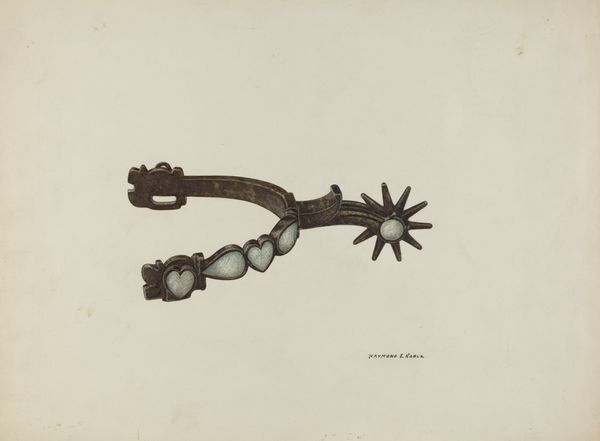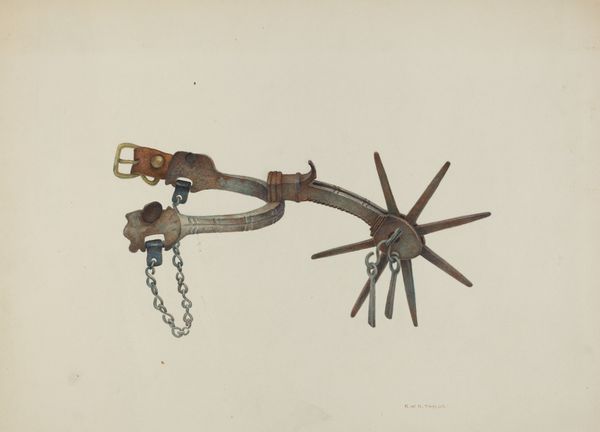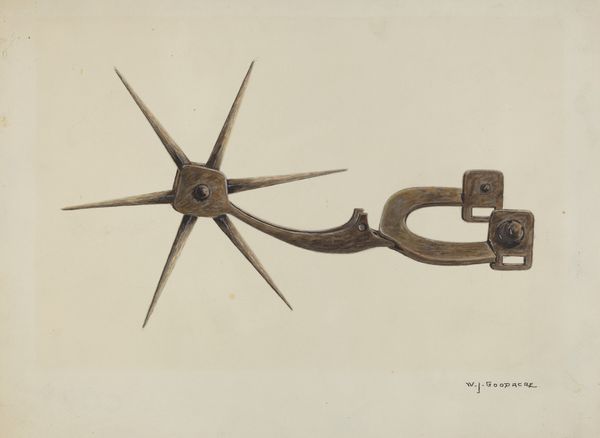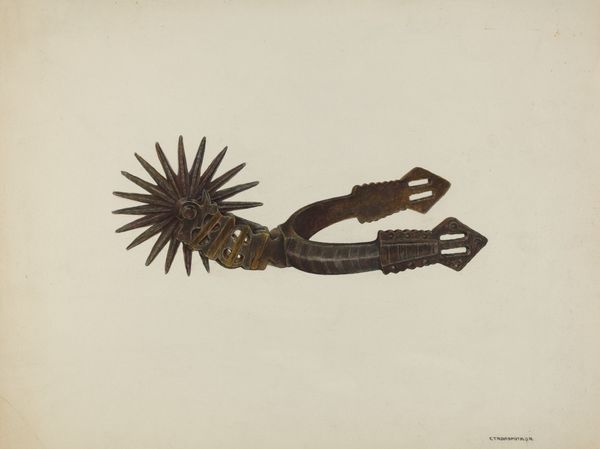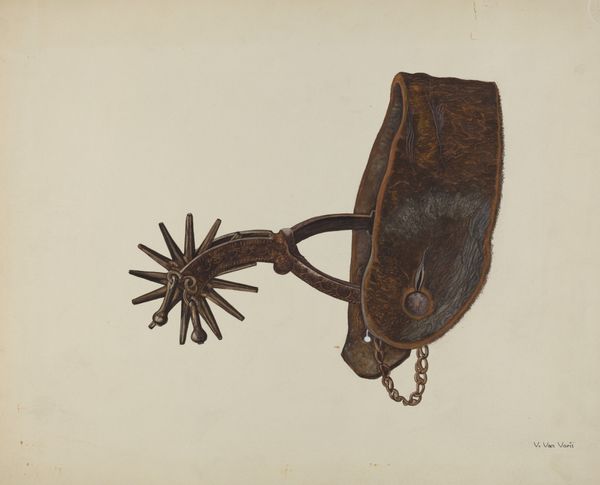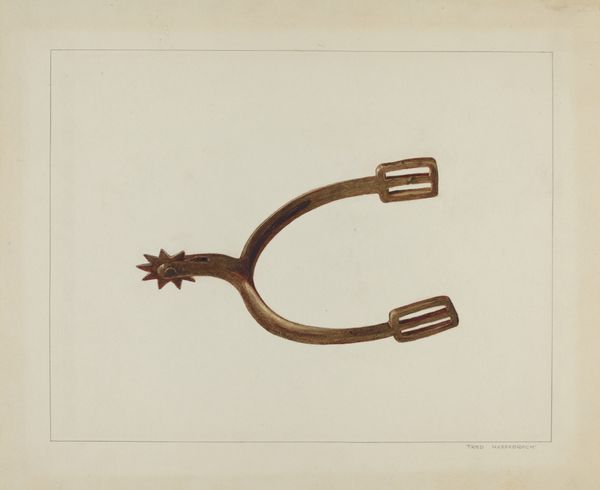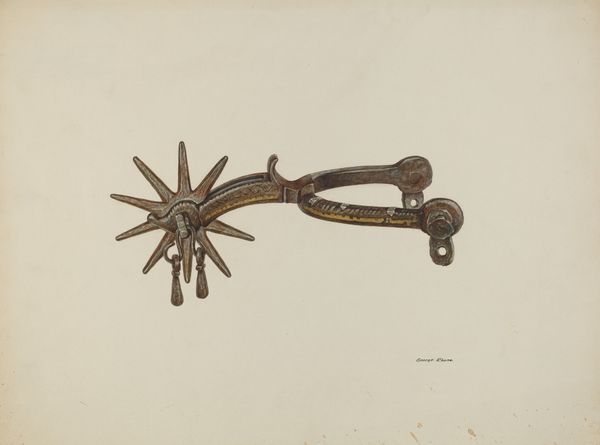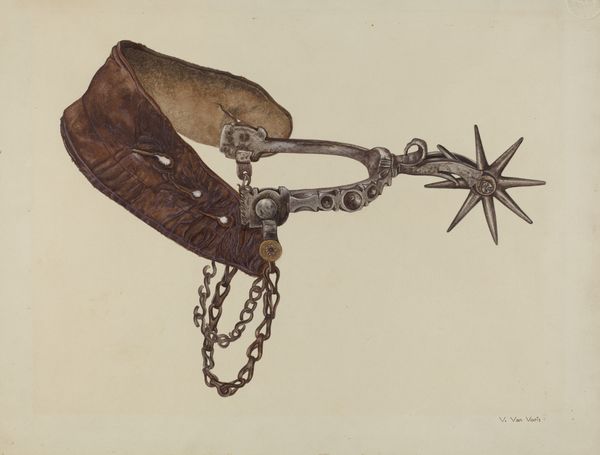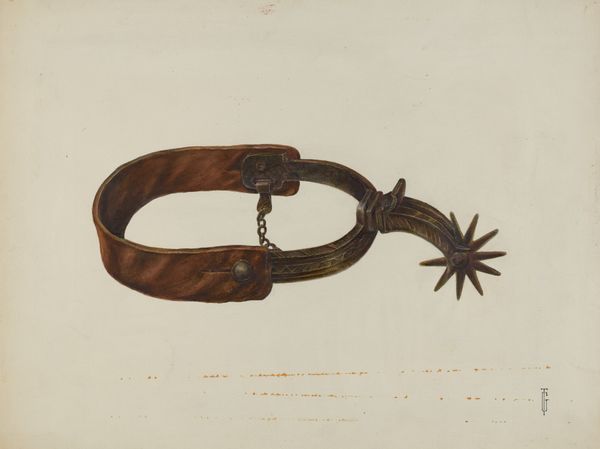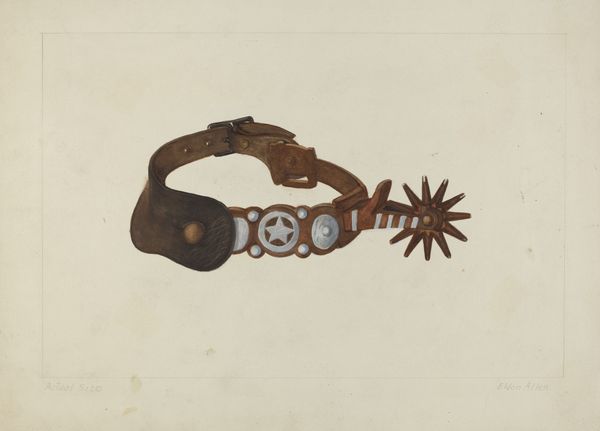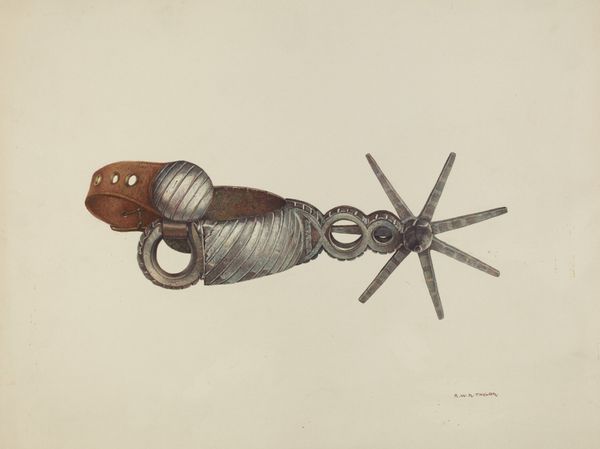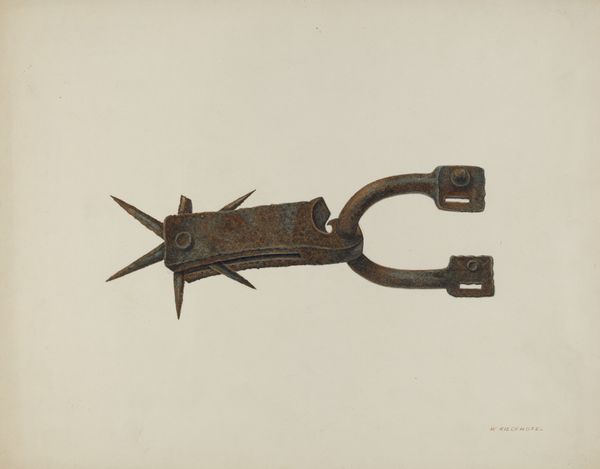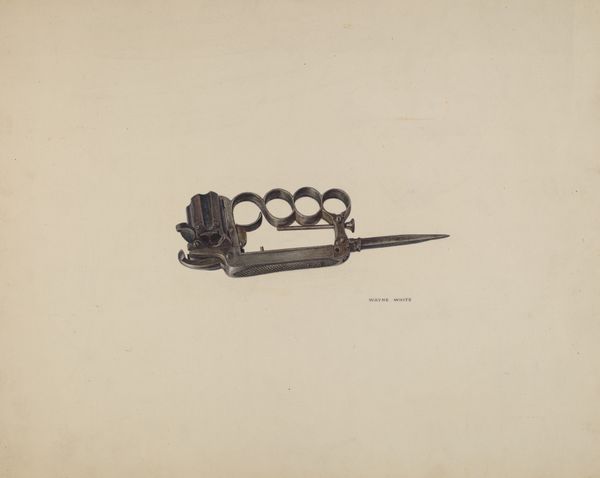
drawing, watercolor
#
drawing
#
water colours
#
watercolor
#
watercolour illustration
#
academic-art
#
watercolor
#
realism
Dimensions: overall: 35.6 x 44.4 cm (14 x 17 1/2 in.)
Copyright: National Gallery of Art: CC0 1.0
Curator: I see... well, "Spurs" by Clyde L. Cheney, made around 1937, renders these metal objects in almost documentary detail using watercolor. Quite a matter-of-fact portrayal. What strikes you first about it? Editor: Definitely the weight. I feel the heft of those spurs, the potential for both grace and violence they carry. It's interesting to see them isolated like specimens—divorced from the cowboy and the horse. They’re imbued with a very particular history. Curator: Indeed, there's a stillness here that's quite deceptive. Watercolor has this reputation for being so light and airy, but Cheney captures the hard edges and rusticated surfaces beautifully, almost like he's caressing the metal with his brush. It reminds me of old photographs capturing a moment just before something is set in motion. Editor: The realism emphasizes the tools, which opens a complex perspective, no? How are the gendered dynamics of labor and the natural world shaped? These spurs aren’t merely decorative; they are tools of domination, projecting power onto both animals and land, really underscoring issues around class and conquest... Curator: Absolutely. I also wonder about Cheney’s intent. Is it purely representational or is there some commentary embedded? The academic style almost begs the viewer to accept these objects as... just what they are? And yet the very act of isolating them elevates them, giving them an iconic presence. Editor: Perhaps. And it feels worth adding here that depictions of the American West often omit the diverse voices and experiences of those who shaped it. Are we seeing, in this ostensibly neutral study, another form of erasure? Where are the Native riders, the Black cowboys, the perspectives of the animals themselves? Curator: Hmmm... It’s that negative space around them too. It feels… empty, almost forlorn. Makes me feel melancholic. Like they're relics of a bygone era—symbols of a rugged individualism that’s slowly fading away. Though maybe I'm just projecting my own romantic notions onto them. Editor: Perhaps, but even those romantic notions are themselves constructs. I see the sharp spokes of the rowels and I think of bodies in motion—and bodies subjugated. What it communicates is that, beyond surface aesthetics, we can find difficult, vital truths. Curator: I suppose that’s why it’s so rewarding to stare at simple subjects, isn't it? A world of possible reflections opens up... Editor: Indeed. There's history, yes, and more importantly, context. Without that, all we have is a pretty picture—and a missed opportunity for understanding.
Comments
No comments
Be the first to comment and join the conversation on the ultimate creative platform.
